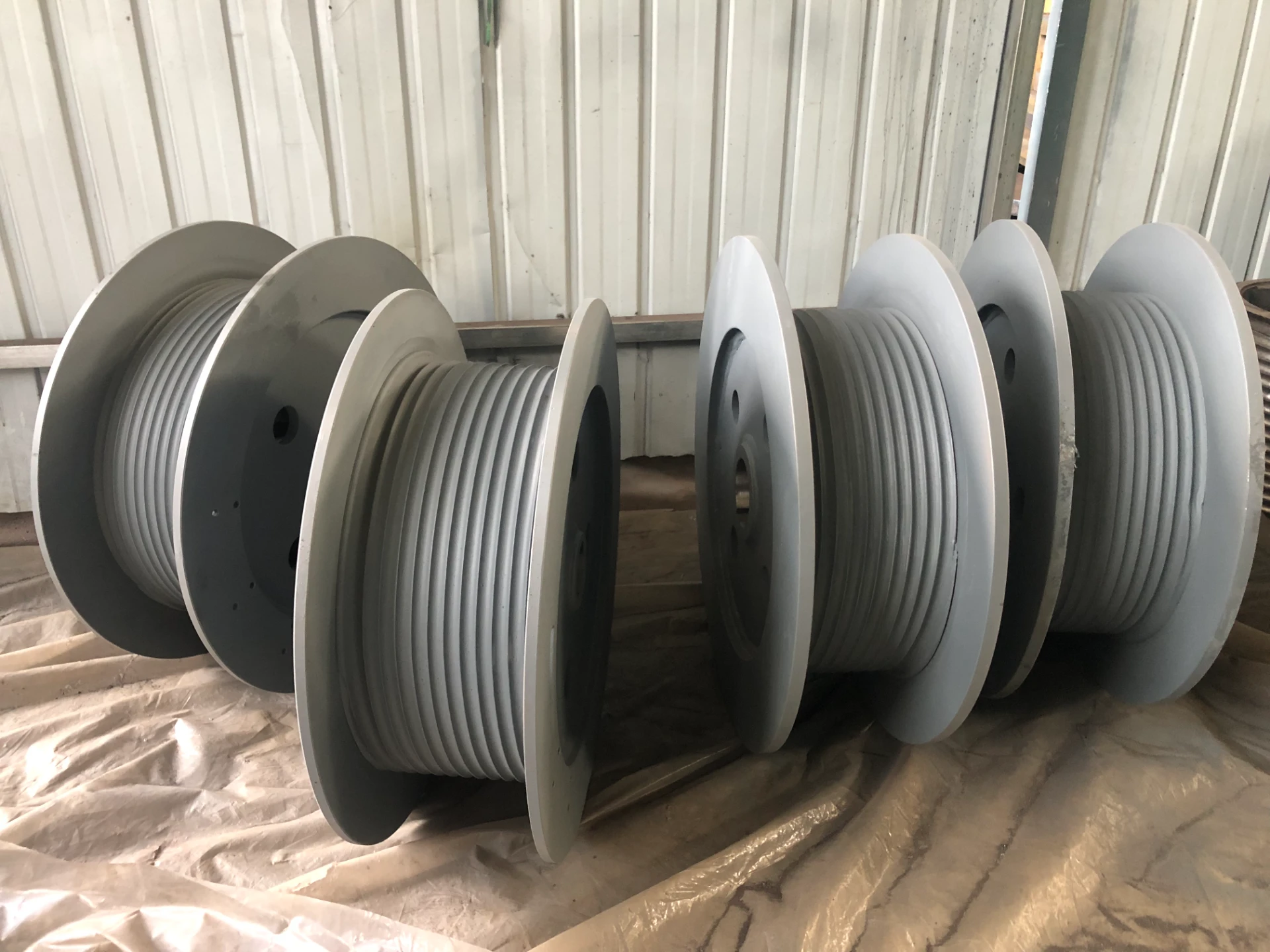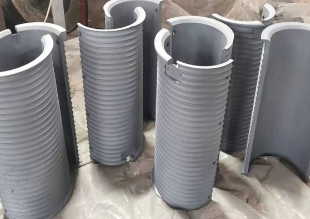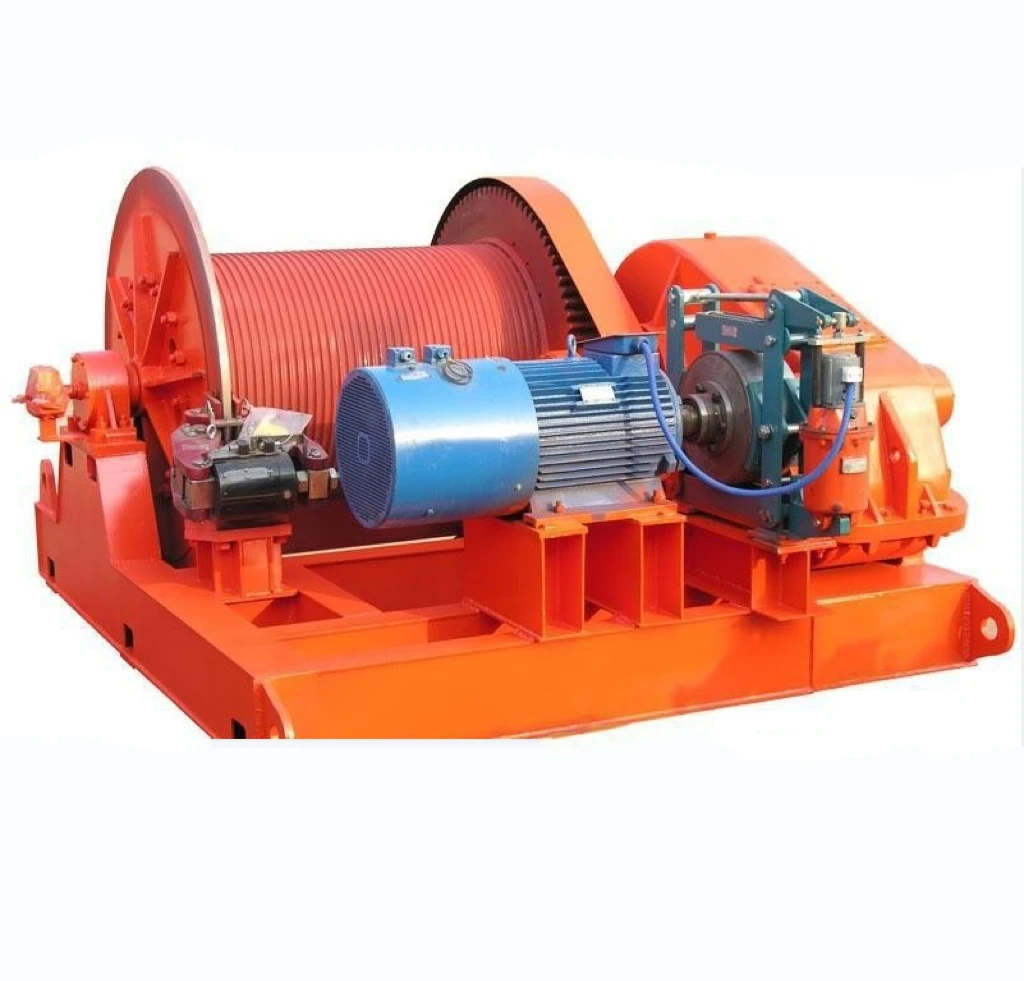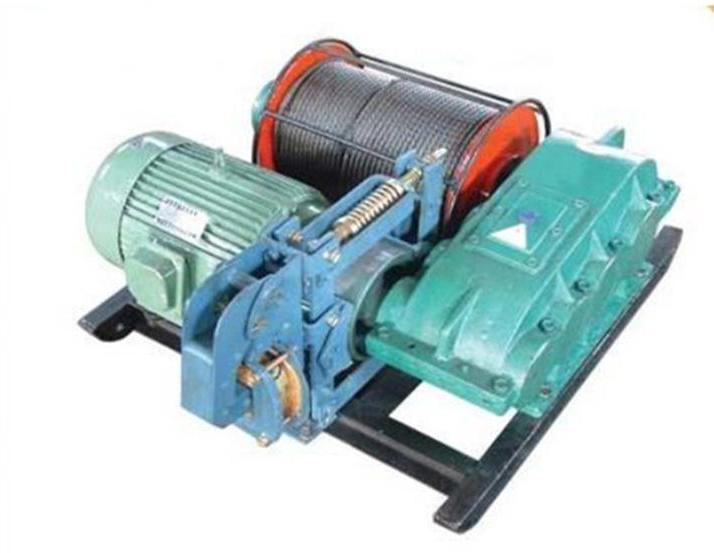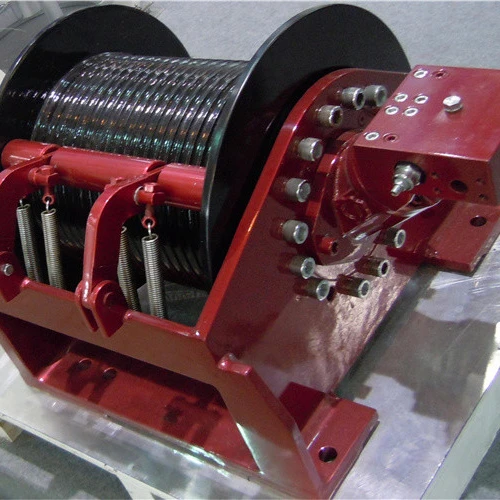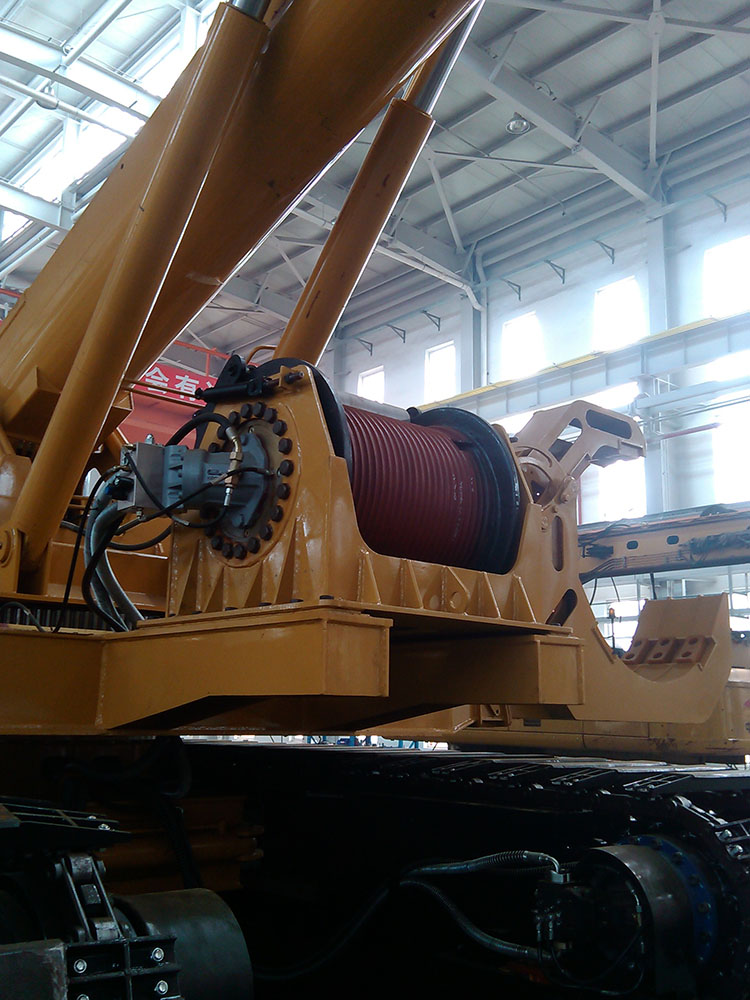Industrial Hydraulic Winch – Powerful & Durable Solutions for Heavy Lifting
Industrial Hydraulic Winch: The Unsung Hero of Heavy-Duty Operations
If you’ve ever seen those mammoth machines pulling massive loads in construction sites, offshore oil rigs, or remote mining camps, chances are an industrial hydraulic winch was at work behind the scenes. It may not be flashy, but the impact of these devices is global and profound. From speeding up industrial workflows to enhancing safety in hazardous zones, understanding industrial hydraulic winches unlocks insights into how modern heavy industries keep moving — literally and figuratively.
Why It Matters Globally
On a macro scale, industries like construction, maritime, mining, and disaster relief rely heavily on dependable lifting and hauling solutions. According to the International Organization for Standardization (ISO), efficient material handling systems can reduce workplace accidents by up to 40%, while also saving project timelines and budgets. The World Bank highlights that equipping infrastructure projects with robust tools like hydraulic winches translates directly to economic development, especially in emerging economies. When cranes or forklifts can’t do the trick, these winches fill the gap — offering unmatched power density and versatility.
What Is An Industrial Hydraulic Winch, Exactly?
In the simplest terms, an industrial hydraulic winch is a mechanical device that uses hydraulic power to wind or unwind a cable or rope. This winding action controls heavy loads, pulling them across distances or lifting them vertically. Unlike electric or manual winches, the hydraulic variety taps into fluid pressure — basically candlepower in a liquid form — to produce greater force in smaller, more rugged packages.
Hydraulic winches are often the backbone of operations where reliability, strength, and responsiveness must meet tough conditions: think-offshore platforms buffeted by salt spray, or emergency relief teams laboring in muddy terrains after floods. These devices aren’t just machines, but vital connectors between human efforts and the demands of nature or industry.
Summary: Industrial hydraulic winches blend strength and precision by harnessing hydraulic pressure, becoming indispensable tools in multiple sectors worldwide.
Core Components and Key Features Driving Performance
1. Durability and Weather Resistance
Many industrial hydraulic winches are built with heavy-duty materials like stainless steel and high-strength alloys. They often feature sealed components and corrosion-resistant finishes to survive harsh environmental conditions — a must-have in offshore drilling or arctic mining.
2. Power and Scalability
Whether you’re pulling a few tons or dozens, hydraulic winches come in a wide range of capacities. Their modular designs allow for customization, which means industries can tailor them precisely to the task at hand, scaling power without sacrificing control.
3. Precise Control and Safety Mechanisms
Advanced hydraulic winches commonly provide smooth, controllable speed adjustments and braking systems. This precision minimizes accidents and ensures delicate loads are handled with care — crucial when moving fragile equipment or during rescue operations.
4. Ease of Integration and Maintenance
Hydraulic winches can be plugged into existing systems — whether powered by diesel, electric pumps, or solar-hydraulic hybrids. Their relatively simple mechanical structure means fewer breakdowns and easier servicing on-site, even in the most remote locations.
5. Efficiency and Energy Use
While hydraulic systems sometimes get a bad rap for inefficiency, today’s models often include energy recovery and variable flow controls, optimizing fuel and power consumption, adding to a greener footprint.
Quick takeaway:
- Durability ensures longevity.
- Scalability matches your project needs.
- Precision improves safety.
- Easy maintenance reduces downtime.
- Energy-efficient designs cut costs and emissions.
Industrial Hydraulic Winch: Real-World Applications Across the Globe
Around the world, these winches are workhorses in diverse sectors:
- Oil and Gas: On offshore platforms in the North Sea, hydraulic winches haul heavy equipment and anchor chains amid rough seas.
- Construction: Urban high-rises in Asia rely on portable hydraulic winches for lifting materials when cranes can’t access confined spaces.
- Mining: Deep in South American mountain mines, winches transport ore loads while withstanding dust and vibrations.
- Disaster Relief: In post-earthquake Nepal, NGOs use compact hydraulic winches for moving debris and enabling rescue operations quickly and safely.
- Forestry and Agriculture: In Canadian timber camps, these winches assist in repositioning felled logs across rugged terrain.
Industries and regions alike benefit from the reliability and efficiency offered by these devices.
Advantages & Long-Term Value of Industrial Hydraulic Winches
It might sound a little dry at first glance, but the value is undeniable:
- Cost Efficiency: Lower maintenance and fuel costs over time outperform electric counterparts, especially in heavy-use conditions.
- Sustainability: Modern winches with green-tech enhancements reduce carbon emissions, fitting into broader industry sustainability goals.
- Reliability: Field engineers often stress that downtime costs ten times more than equipment costs — durable hydraulic winches help keep operations humming.
- Worker Safety: Smooth control and automated brakes prevent accidents, supporting a safer workplace.
- Social Impact: Beyond profitability, reliable winches foster trust among partners and local communities, especially in humanitarian missions.
Specifications You Should Know
| Feature | Typical Range / Value | Notes |
|---|---|---|
| Pulling Capacity | 2 to 50+ tons | Depends on model & application |
| Cable Length | 20 to 200 meters | Varies by use case |
| Operating Pressure | 1500 to 3500 PSI | Hydraulic system specification |
| Power Source | Diesel, Electric, or Hybrid | Adaptable for different sites |
| Speed Control | Variable, 0-30 m/min | Smooth handling of delicate loads |
| Weight | 500 to 3500 kg | Depends on capacity and build |
Comparing Leading Industrial Hydraulic Winch Vendors
| Vendor | Capacity Range | Customization | Warranty | Price Range |
|---|---|---|---|---|
| Alpha Hydraulic | 2-30 tons | High - bespoke systems | 3 years | $$$ |
| Beta Winches Co. | 5-50+ tons | Medium - modular options | 5 years | $$$$ |
| Gamma Equipment | 1.5-25 tons | Standard | 2 years | $$ |
| Delta Hydraulics | 3-40 tons | High | 4 years | $$$ |
What’s Next? Innovations Shaping the Future
The future looks promising (and green). We’re starting to see:
- Hybrid Power Systems: Winches powered partially by solar or battery storage to minimize fossil fuel reliance.
- Smart Controls: Remote monitoring and automation improve efficiency and safety — operators can avoid risky terrain completely.
- Advanced Materials: Use of lightweight composites cuts unit weight without losing strength.
- Sustainability Certifications: Vendors now align with ISO 14001 and other environmental standards.
These trends answer the growing call for equipment that’s not just powerful, but aligned with climate commitments and digitization.
Challenges and How Experts Overcome Them
Of course, no tech is perfect. The most common hurdles are:
- Maintenance in Remote Locations: Hydraulic systems need clean fluid and regular inspections, tough in isolated areas.
- Initial Capital Cost: While cheaper to run, upfront investments can deter some smaller operators.
- Hydraulic Leaks: Risk of environmental contamination if leaks occur.
To tackle these, companies use:
- Modular spare parts kits & mobile workshops — enabling quicker field fixes.
- Leasing programs and financing — to spread out costs.
- Biodegradable hydraulic oils — reducing ecological risks.
FAQ: Industrial Hydraulic Winch Essentials
Q1: How do industrial hydraulic winches differ from electric winches?
A1: Hydraulic winches often provide higher torque and can function in more demanding environments without overheating. They excel in applications requiring intense power and precision over long periods.
Q2: Can hydraulic winches be customized for different industries?
A2: Absolutely. Their modular design allows tailoring to capacity, power source, safety features, and cable length, making them versatile across sectors like construction, mining, and emergency services.
Q3: What regular maintenance does a hydraulic winch require?
A3: Key steps include checking hydraulic fluid levels and cleanliness, inspecting cables for wear, lubricating drum bearings, and ensuring all seals and motors are intact to prevent leaks or failures.
Q4: Are hydraulic winches safe to operate in hazardous zones?
A4: Yes, especially models designed with explosion-proof components and remote controls. Safety mechanisms such as emergency brakes and overload protection further reduce risks.
Final Thoughts
Whether it’s rebuilding after a disaster or lifting a bridge segment into place, the industrial hydraulic winch quietly delivers raw power wrapped in precision. Invest in one, and you’re not just buying a piece of machinery — you’re tapping into decades of engineering, reliability, and a global network of innovation. For operators wanting to future-proof their projects, these winches promise performance today and adaptability for tomorrow.
Curious to see which hydraulic winch fits your needs best? Visit our website: https://www.lbswinch.com for expert advice, specs, and support.
References
-
Double Drum Hydraulic Winch – Durable, Efficient Load Handling SolutionsNewsNov.25,2025
-
Hydraulic Drum Winches: Powering Heavy Lifting with Precision and DurabilityNewsNov.24,2025
-
Hydraulic Driven Winch – Reliable Heavy Lifting Solutions for Industry & ReliefNewsNov.24,2025
-
Hydraulic Crane Winch – Powerful & Precise Heavy Lifting Solutions | LBS WinchNewsNov.23,2025
-
Electric Over Hydraulic Winch: Efficient, Durable Lifting Solutions for Modern IndustryNewsNov.23,2025
-
Hydraulic Logging Winch Guide | Global Applications & InnovationsNewsNov.22,2025


